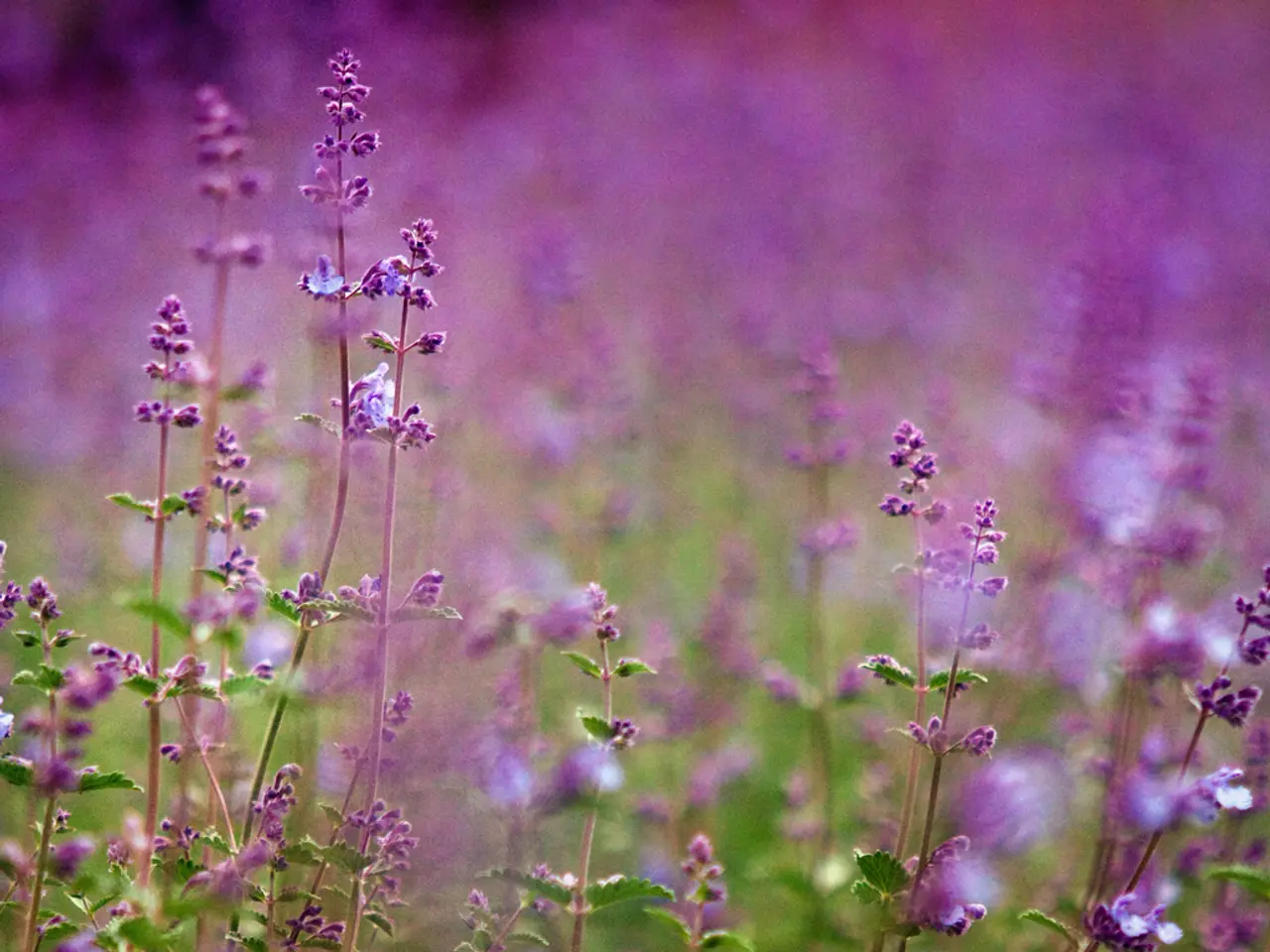Innovative Landscaping Approaches Incorporating Lavender: Explore 15 Fresh Designs
Embark on a sensory journey as we explore the many ways to incorporate lavender into your landscaping for a stunning, aromatic garden. Known for its soothing scent and vibrant purple blooms, lavender is an excellent choice for any garden enthusiast seeking to add both visual appeal and fragrance to their outdoor space.
One creative approach is to design a French-style small patio by grouping lavender in terracotta pots or stone planters. This romantic cluster not only provides visual charm but also releases its calming scent, creating a delightful sensory experience. Pair these with natural stone pavers like limestone or reclaimed bricks to evoke an old-world European vibe, and let moss or creeping thyme grow between stones for added texture and softness.
Another idea is to plant lavender along garden paths. This not only adds a touch of elegance but also ensures that when brushed against, its fragrance is released, creating a delightful scent trail for visitors to enjoy. Combining lavender with other aromatic plants like thyme or catmint as edging creates a sensory experience that is both visually appealing and invigorating.
Lavender also thrives in rock gardens, where its silver-toned, drought-tolerant foliage and colorful blooms provide a beautiful contrast with rocks and gravel. This resilient plant adds both texture and scent, making it an ideal choice for sunny spots.
For container displays, consider mixing lavender with other fragrant herbs such as oregano and lemon balm in decorative pots on patios and porches. These portable bursts of aroma can be moved to suit your space design, providing a versatile solution for adding fragrance to your outdoor living areas.
To attract bees, butterflies, and other pollinators, plant lavender in clusters to create a pollinator station. This not only makes your garden lively and fragrant but also supports beneficial insect populations, contributing to a healthy ecosystem.
Incorporate lavender as a perennial alongside other flowers in your garden beds or raised berms for lasting beauty, texture, and scent. This low-maintenance strategy enhances soil retention and visual interest, making it an ideal choice for those seeking a garden that requires minimal upkeep.
Beyond landscaping, lavender can be harvested for wreaths, sachets, bundles, or other herbal crafts that bring its fragrance indoors.
When it comes to cultivating lavender, it thrives best in full sun with well-drained soil, making it ideal for sunny spots where its bright purple flowers and aromatic gray-green foliage can flourish, attract pollinators, and enhance garden appeal season after season.
By using lavender creatively in these positions, you can balance visual texture, fragrance, and garden utility, resulting in a garden that is beautiful, aromatic, and inviting year-round.
It's essential to note that French lavender (L. dentata) and Spanish lavender (L. stoechas) typically overwinter only down to zone 8, while English lavender (Lavandula angustifolia) and lavandin (L. x intermedia) varieties thrive in areas as cool as USDA zone 5.
When planning a pollinator garden, include native flowers and other noninvasive plants alongside lavender to create a diverse and thriving ecosystem. Good companion plants for lavender include purple coneflower, roses, sage, marigolds, and rosemary.
In conclusion, lavender is a versatile and beautiful addition to any garden. By incorporating it creatively into your landscaping, you can create a garden that is both visually stunning and fragrant, providing enjoyment for you and your pollinator friends year-round.
- Group lavender in terracotta pots or stone planters for a French-style small patio, enhancing the area with a calming scent and visual charm.
- Plant lavender along garden paths for an elegant touch, releasing its fragrance when brushed against and creating a delightful scent trail.
- Lavender thrives in rock gardens, contrasting beautifully with rocks and gravel while adding texture and scent to sunny spots.
- Mix lavender with fragrant herbs like oregano and lemon balm in decorative pots on patios and porches for portable bursts of aroma.
- Plant lavender in clusters to create a pollinator station, supporting beneficial insect populations and contributing to a healthy ecosystem.
- Incorporate lavender as a perennial alongside other flowers in your garden beds or raised berms for lasting beauty, texture, and scent.
- Harvest lavender for wreaths, sachets, bundles, or other herbal crafts to bring its fragrance indoors, extending the garden's appeal beyond the outdoors.




